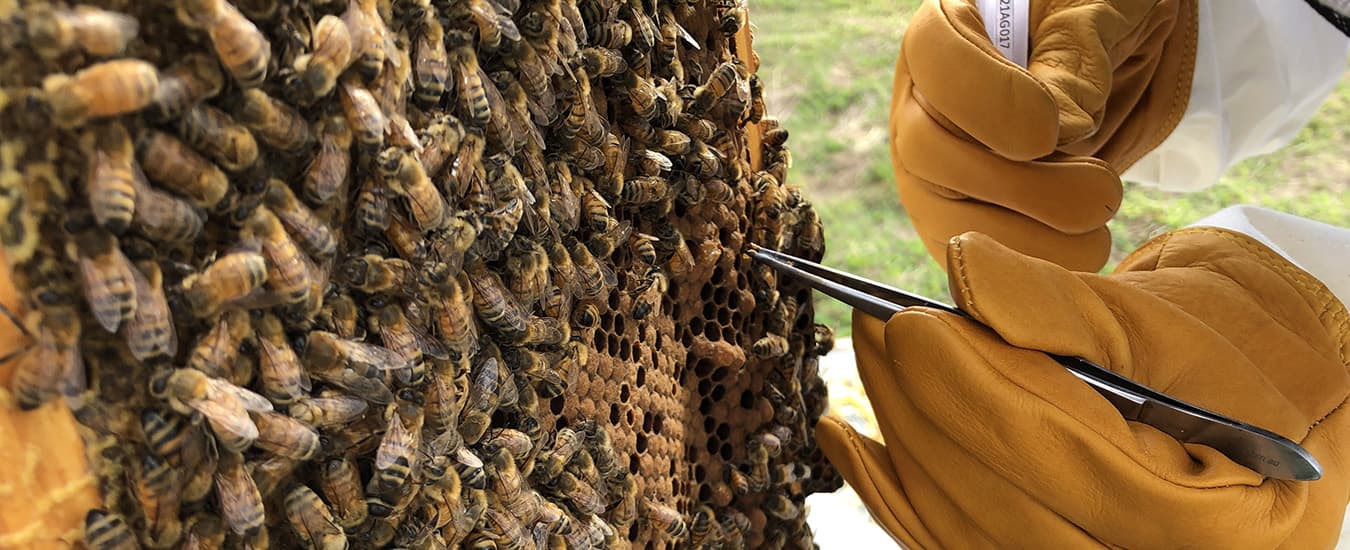Our national honey bee genetic improvement program, Plan Bee, is offering free genetic testing to bee breeders who are collecting performance data. This includes not only commercial queen breeders, but also those who breed queens for themselves.
What does sampling for genetic testing entail?
What do you collect?
There are several options, which will give us the data we need. In order of preference these are:
- 6 drone pupae
- 6 large drone larvae
- Less than 6 drone pupae or large larvae
- 1 worker pupae
- 1 large worker larvae
We’ve found that the closer the bee is to emergence the better the quality of the DNA we get. If using larvae, we ask for larger larvae as we need a certain amount of tissue, so please choose ones that are close to being capped. For almost mature bees we will generally take 2-3 legs off each bee. This gives you an idea of how much sample we need. If the samples are still young they will tend to get punctured by the tweezers, this is fine. Often the heads come off pupae. Just give us the largest piece you get, ensuring that it is the equivalent of at least 3 legs in size. It’s good for us to have some extra in case we need to do further analysis.
Using developing bees ensures that they are the offspring of the resident queen. Drones are preferred because they come from unfertilised eggs. This means they carry only the queen’s DNA. By taking 6 of them we have a 95% chance of getting both copies of the queen’s DNA at each genetic marker.
Sometimes a colony is not producing drones. In that case 1 developing worker will give us half the queen’s DNA. We don’t want more than 1 worker as they are likely to have different fathers, which will complicate things for the analysis. Some people have also chosen to provide virgin queens.
Any breeder wishing to chat about their options for sample collection can contact Nadine Chapman on or 02 9351 2267 to discuss options.
How do you collect samples?
There are several options available for sample collection.
Samples must be kept as cold as possible to ensure the quality of DNA. If the DNA degrades the sample may not be usable. We will provide a kit that includes:
- Labelled tubes
- Tweezers
- Alcohol wipes
- Sample sheet
Step by step instructions:
- Using the tweezers put the samples in the tube
- Record the details on the sample sheet
- Wipe the tweezers with alcohol wipes or sanitiser wipes between colonies to ensure that tissue from the last colony doesn’t get mixed into tissue from the current colony.
- If possible, take an ice box with ice blocks or ice cubes or a car freezer to keep the samples cold while working and in transit.
- Store samples in the freezer once you’re home.
Note, if someone from our team is assisting you we will likely bring dry ice to keep the samples on.









